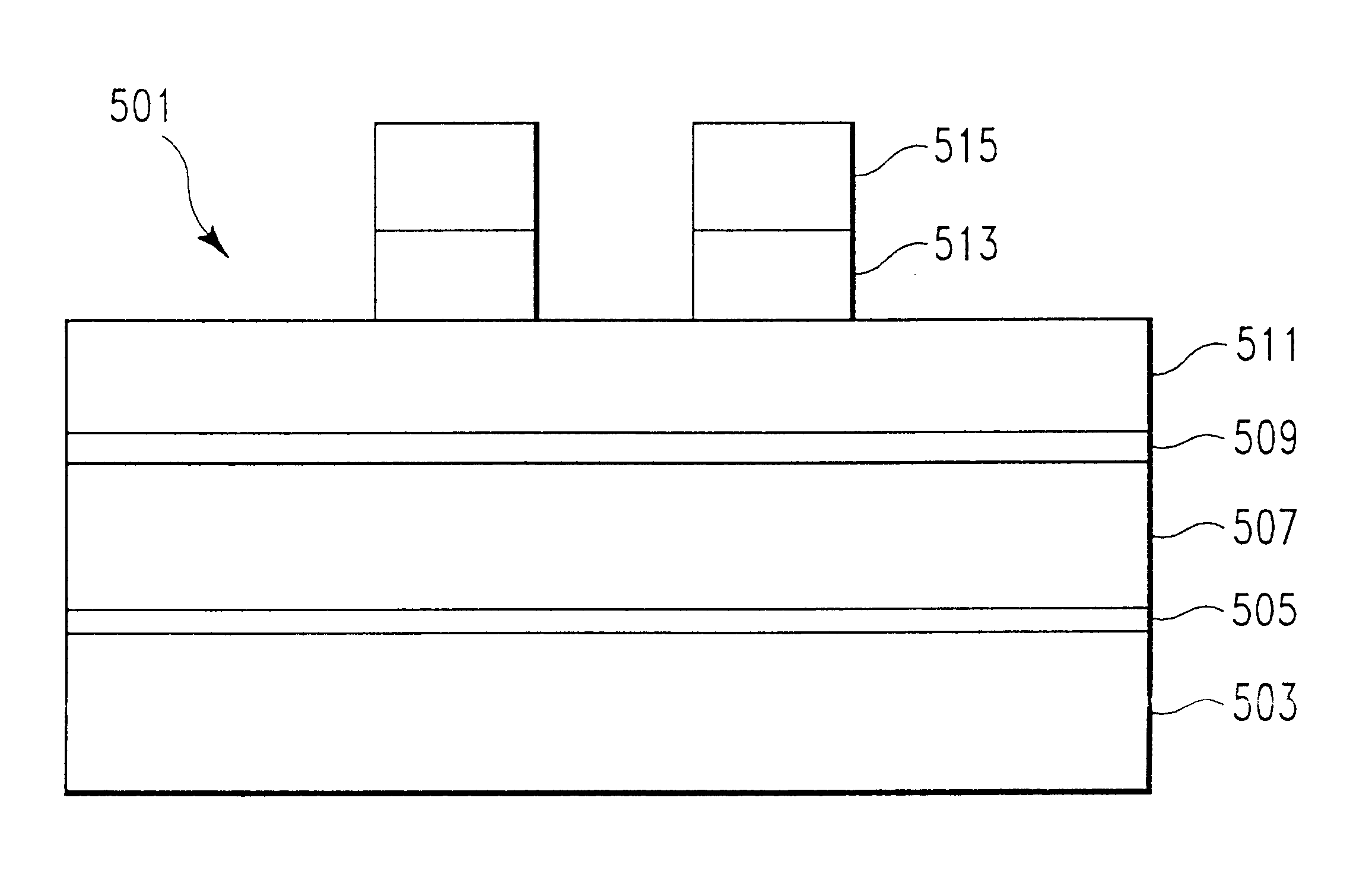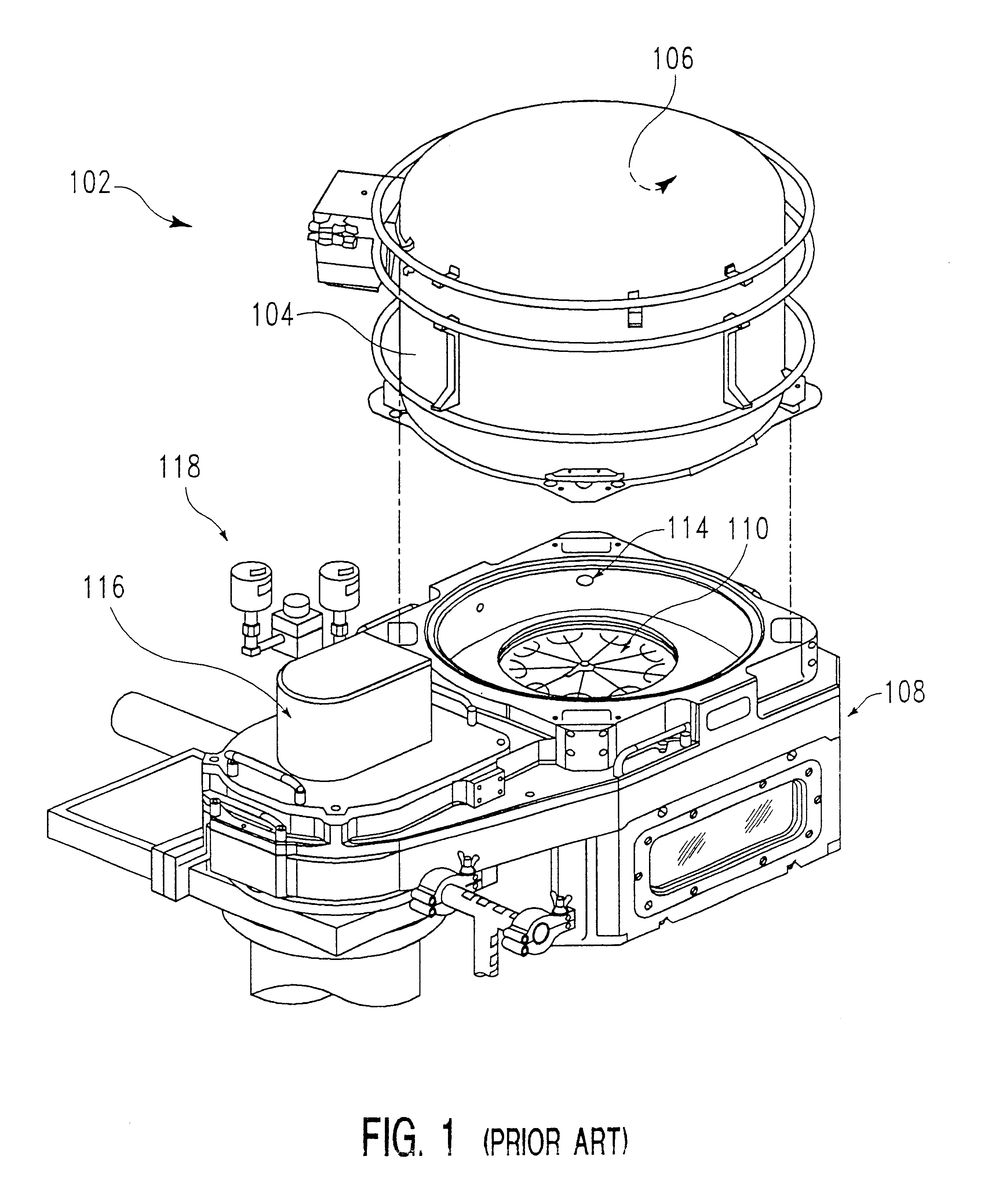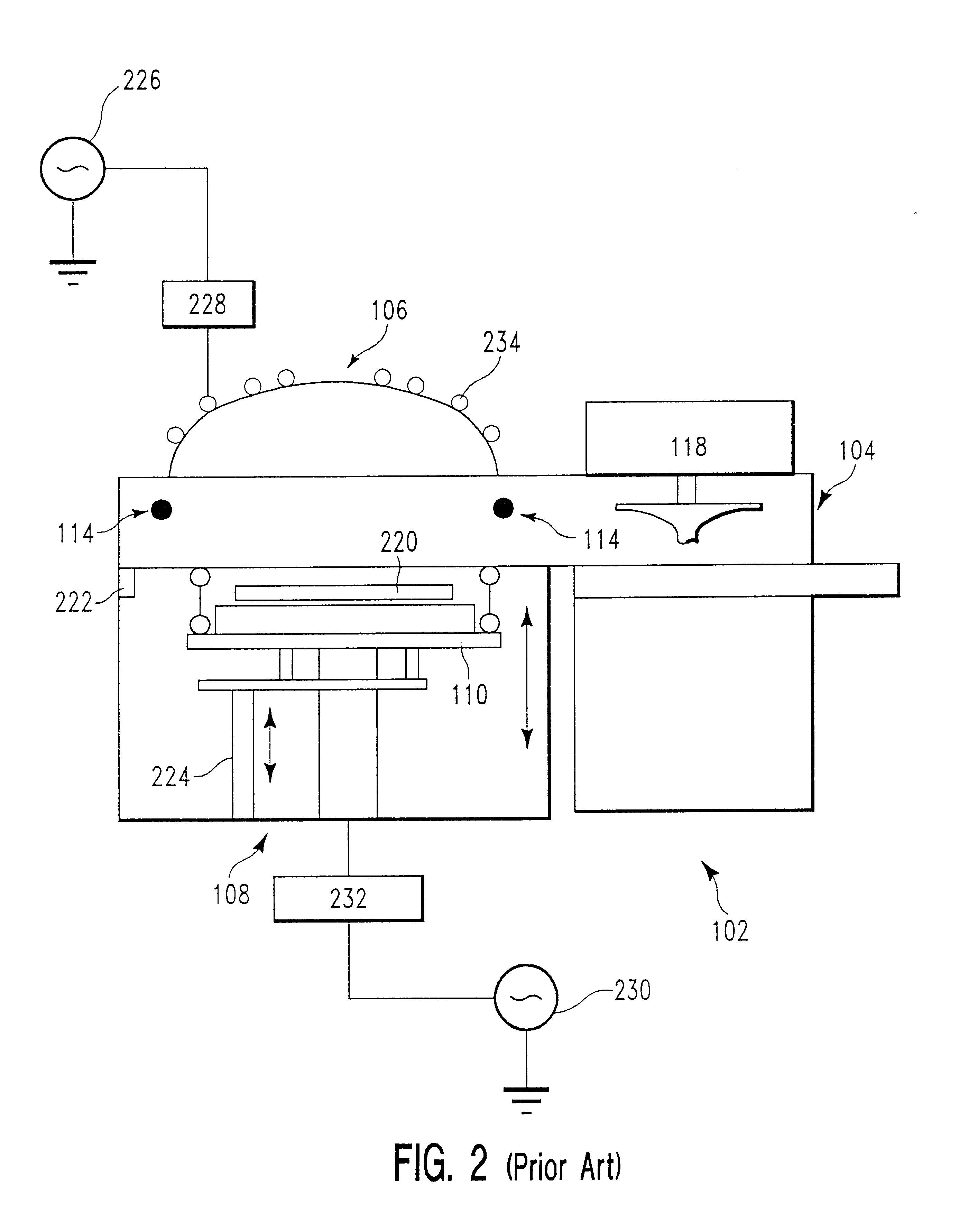Method for in situ removal of a dielectric antireflective coating during a gate etch process
a dielectric anti-reflective coating and gate etching technology, which is applied in the direction of basic electric elements, electrical equipment, semiconductor devices, etc., can solve the problems of increasing the etch rate of the darc layer, affecting the performance of the device, and ultimately within the device,
- Summary
- Abstract
- Description
- Claims
- Application Information
AI Technical Summary
Problems solved by technology
Method used
Image
Examples
example one
In this set of experiments, a silicon oxynitride DARC layer was etched simultaneously during a polycide gate etch process. FIG. 3 shows the various layers of the particular film stack used in this set of experiments. The film stack 301 included, from top to bottom, a silicon oxynitride layer 313, having a thickness of about 800 .ANG.; a "TEOS" (tetraethyl orthosilicate) deposited silicon oxide layer 311, having a thickness of about 1300 .ANG.; a tungsten silicide layer 309, having a thickness of about 800 .ANG.; a doped polysilicon layer 307, having a thickness of about 1500 .ANG.; and a gate oxide layer 305, having a thickness of about 70 .ANG., all deposited on a single-crystal silicon substrate 303. The film stack 301 was patterned using a conventional photoresist, which was removed prior to etching the silicon oxynitride and tungsten silicide layers. The TEOS-deposited silicon oxide layer 311 has been partially etched away in steps preceding the removal of the photoresist. FIG. ...
example two
In this experiment, residual silicon oxynitride DARC layer was removed simultaneously during etching of a doped polysilicon gate. FIG. 4 shows the various layers of the particular film stack used in this set of experiments. The film stack 401 included, from top to bottom, a silicon oxynitride layer 411, having a thickness of about 570 .ANG.; a TEOS deposited silicon oxide layer 409, having a thickness of about 500 .ANG.; a doped polysilicon layer 407, having a thickness of about 2000 .ANG.; and a gate oxide layer 405, having a thickness of about 52 .ANG., all deposited on a single-crystal silicon substrate 403. The film stack 401 was patterned using a conventional photoresist, which was removed prior to etching the silicon oxynitride and doped polysilicon layers. The TEOS-deposited silicon oxide layer 407 has been partially etched away in steps preceding the removal of the photoresist. FIG. 4 also shows the silicon oxynitride layer 409 partially removed.
One wafer having the structur...
example three
The method of the present invention could also be used for the simultaneous removal of a DARC layer during a tungsten metal gate etch process. FIG. 5 illustrates a typical film stack including a tungsten metal layer. The film stack 501 includes, from top to bottom, a silicon oxynitride layer 515, having a thickness of about 1100 .ANG.; a TEOS deposited silicon oxide layer 513, having a thickness of about 1000 .ANG.; a tungsten layer 511, having a thickness of about 1000 .ANG.; a titanium nitride barrier layer 509, having a thickness of about 300 A; an N+ and P+ doped polysilicon layer 507, having a thickness of about 1500 .ANG.; and a gate oxide layer 505, having a thickness of about 70 .ANG., all deposited on a single-crystal silicon substrate 503. The film stack 501 is typically patterned using a conventional photoresist, which is removed prior to etching the silicon oxynitride and tungsten layers. The TEOS-deposited silicon oxide layer 513 is partially etched away in steps preced...
PUM
 Login to View More
Login to View More Abstract
Description
Claims
Application Information
 Login to View More
Login to View More - R&D
- Intellectual Property
- Life Sciences
- Materials
- Tech Scout
- Unparalleled Data Quality
- Higher Quality Content
- 60% Fewer Hallucinations
Browse by: Latest US Patents, China's latest patents, Technical Efficacy Thesaurus, Application Domain, Technology Topic, Popular Technical Reports.
© 2025 PatSnap. All rights reserved.Legal|Privacy policy|Modern Slavery Act Transparency Statement|Sitemap|About US| Contact US: help@patsnap.com



